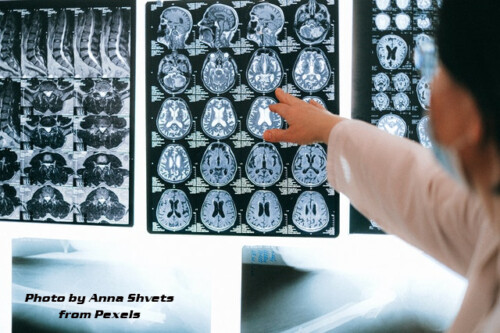Research Highlight: Mapping ‘Imbalance’ in Brain Anatomy Across the Lifespan
Humans are born with relatively immature brains that continue to develop in size, shape, and structure throughout childhood and adolescence. Different brain areas must develop in proportion to one another in a standardized way to achieve a mature, adult brain. Researchers at the National Institute of Mental Health (NIMH) have developed a new way to measure the degree to which the proportions of an individual person’s brain differ from the proportions typically seen in the broader population. This measurement approach, called “anatomical imbalance mapping” or AIM, yields new insights into brain development and offers tools for further study.
Ajay Nadig led the work as a post-baccalaureate researcher supervised by Armin Raznahan, M.D., Ph.D., chief of the Section on Developmental Neurogenomics in the NIMH Intramural Research Program. The findings are published in the Proceedings of the National Academy of Sciences.
First, Nadig and co-authors examined structural brain scans from healthy participants who ranged in age from 6 to 25 years old. The researchers used these scans to estimate the cortical thickness of different brain areas for each participant. Then, they combined these estimates across all participants to identify a set of norms for the typical associations between different brain areas. Comparing an individual’s estimates to these norms allowed the researchers to calculate individual anatomical imbalance, or the degree to which the structural proportions in a person’s brain deviated from the norm.
When the researchers applied AIM to data from two longitudinal studies, they found that people tend to show decreasing anatomical imbalance as they reach adolescence. In general, brain areas involved in more basic functioning, such as the sensorimotor cortex, tend to converge toward structural norms early in development. Areas underlying more complex functions—such as the limbic system, which plays a role in emotion, learning, and memory—take the longest to approach group norms.
To find out whether these structural patterns continue to change across the lifespan, the researchers expanded their analyses to include large-scale datasets from the Human Connectome Project, the UK Biobank, and the Cambridge Center for Aging and Neuroscience repository. This yielded data from a combined total of 21,711 participants ranging in age from 6 to 87 years old.
As expected, the expanded analyses showed that individual anatomical imbalance tends to decrease throughout childhood and adolescence, with a convergence toward structural norms by the time people reach their mid-20s. The structural proportions of the brain tend to hold steady throughout adulthood, diverging from group norms once more as people reach their 80s.
Interestingly, the areas of the cortex that showed the largest decrease in anatomical imbalance in the first few decades of life also showed the largest increase in anatomical imbalance as people aged.
When they examined additional data from pairs of identical twins, Nadig and co-authors found a small association between differences in the twins’ birthweights and later differences in anatomical imbalance. Given that low birthweight is often seen as an indicator of prenatal stress, the findings suggest that differences in anatomical imbalance may reflect differences in early prenatal stress exposure.
Taken together, these findings suggest that although human brains vary in overall structural proportions early in life and are influenced by diverse genomic and environmental factors throughout development, they show a strong tendency to converge toward certain norms as the brain reaches maturity. This convergence is likely driven by genetic “programs” that coordinate development among multiple brain regions.
Determining whether individual differences in anatomical imbalance are associated with observable differences in cognition, behavior, or other aspects of brain function is an important goal of future research, the researchers note.
Reference
Nadig, A., Seidlitz, J., McDermott, C., Liu, S., Bethlehem, R., Moore, T. M., Mallard, T. T., Clasen, L. S., Blumenthal, J. D., Lalonde, F., Gur, R. C., Bullmore, E. T., Satterthwaite, T. D., & Raznahan, A. (2021). Morphological integration of the human brain across adolescence and adulthood. Proceedings of the National Academy of Sciences of the United States of America. https://doi.org/10.1073/pnas.2023860118

